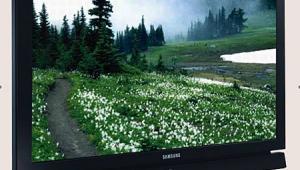Exactinside's VMware 2V0-21.23 questions and answers are meticulously crafted to provide comprehensive preparation for the VMware Certified Professional - Data Center Virtualization 2021 (VCP-DCV 2021) exam. With a focus on accuracy and relevance, these resources cover all key topics and objectives outlined in the exam blueprint.
The questions are designed to simulate the format and difficulty level of the actual exam, offering candidates an opportunity to familiarize themselves with the types of questions they may encounter on test day. They encompass a variety of question types, including multiple choice, scenario-based, and interactive items, ensuring thorough coverage of the exam content.
The 2008 HDTV Technology Face Off
To my knowledge, this has never been done before. Here we have a Face Off consisting of each of the major TV technologies. Two LCDs, two plasmas, two DLPs, and an LCOS battle for the eyes and minds of five distinguished reviewers.

Readers have been asking for this kind of Face Off for years, but before now, it would have made for a mildly interesting, but ultimately useless, article. Now that LCD and plasma prices have come down and sizes have gone up, they can compete for the shopper's dollar right alongside RPTVs.
There were a few considerations—or shall I say imposed restrictions—on the lineup here. The price had to be around $3,000 and the screen size as close to 50 inches as pricing would allow. Initially, prices were a lot closer than you see here; but just a few weeks before we conducted the Face Off, the RPTV prices plummeted. Sure, their 70-inch brethren would have been a closer fit price-wise, but I don't believe people would cross-shop 50-inch and 70-inch displays. Only one display was allowed from each manufacturer, and when possible, the top of the line from each was included.
Sony and JVC both make LCOS (SXRD and D-ILA, respectively), but as we reviewed Sony's 120-hertz model already, and their KDS-A3000 rear-pro was brand new (as was JVC's 120-Hz model), that choice was easy. Sony's KDL-XBR5 would have been a better price fit, but none were available. (And they probably never will come in a 60-inch size.) Sharp's D64 series is as high up in their model line as our price/ size restrictions would allow.
Panasonic's 750 series is the top of their plasma line. There have been many requests to include Mitsubishi's top of the line, an 833 series, so here it is. It represents one half of our DLP contingent, with an "old fashioned" UHP lamp but a six-color color wheel. Samsung's latest RPTV uses LEDs to fire against its DLP chip.
Last was a dark-horse candidate, Pioneer's KURO PDP-5080HD. At $3,500, it costs just as much as the other flat panels here, but it was only 768p. Now how could that compete. . .
Our judges were HT former editor Maureen Jenson, the editor of our sister publication UltimateAVMag.com Tom Norton (now with Home Theater), and contributors John Higgins and David Birch-Jones (otherwise known as DBJ). Rounding out our panel was none other than Mike Nelson, our back-page Curtain Call contributor and the host of the classic Mystery Science Theater 3000.
For our 480p selections, we selected the ever-popular, ever-ridiculed Fifth Element and Gladiator. Then we moved on to HD, with Pirates of the Caribbean and Kingdom of Heaven on Blu-ray and Batman Begins on HD DVD. The Pioneer BDP-95HD and Toshiba HD-A20 supplied 1080i via a Gefen 2x8 HDMI distribution amplifier. At the end, we also viewed 1080p/60 and 1080p/24 (for the displays that could display it). We did most of the viewing with the lights off, although the participants noted performance with the lights on as well. All displays were calibrated and had their various noise reduction, picture enhancement, and other do-dahs turned off. At the end, these features were enabled for comparison. Most importantly, the TVs were covered from the screen down, so all the judges could see were the upper bezels. This way, not only were the individual brands covered, but thanks to close spacing, from the viewing area, you couldn't tell just by looking at the cabinet what the technology was. Markings were placed on the floor at 3X and 4X picture heights. Most of the judges preferred 4X but checked each TV out at 3X as well.
Without further babbling. . .
- Log in or register to post comments


Audio devices with really interesting parameters to approach and experience effectively. Frequency soccer random always ensures stability for good output quality. Research and approach many brands that develop famous and quality audio devices.






























































